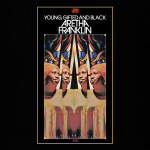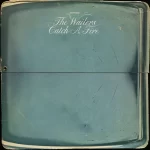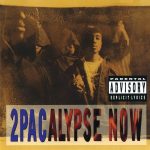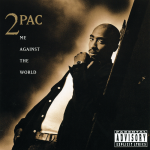
Category: Album
Title: The Final Cut
Artist: Pink Floyd
Released: March 21, 1983.
Genres: Art Rock, Progressive Rock, Symphonic Rock
Album Background
Release Date and Label
The Final Cut was released on March 21, 1983, by Harvest Records in the UK and Columbia Records in the US.
Artist Context
The Final Cut is Pink Floyd’s twelfth studio album and is often seen as a continuation of The Wall (1979). By this time, internal tensions within the band had reached their peak, particularly between Roger Waters and the other members. Waters took full creative control of the project, making the album a deeply personal work. It was the last Pink Floyd album to feature Waters before his departure from the band.
Concept and Inspiration
Themes and Messages
The album is a concept work centered around the themes of war, loss, and disillusionment with political leaders, particularly in the context of the Falklands War and the post-World War II era. It delves into the personal and political disillusionment that Waters felt, blending themes of grief, anger, and betrayal.
Inspiration
The Final Cut was heavily inspired by Roger Waters’ anger at the British government, particularly Prime Minister Margaret Thatcher’s handling of the Falklands War. Waters also reflected on the death of his father during World War II, a recurring theme in his work, making the album a tribute to those who lost their lives in war.
Writing and Recording Process
The album was written almost entirely by Roger Waters, who used leftover material from The Wall sessions as a foundation. Recording took place in several studios across London between July and December 1982. Tensions within the band were high, and Richard Wright was notably absent, having been fired during the recording of The Wall. The process was dominated by Waters, with Gilmour and Mason contributing minimally.
Production Details
Producers and Sound
- Key Producers: The album was produced by Roger Waters, James Guthrie, and Michael Kamen.
- Sound and Musical Style: The Final Cut is characterized by its orchestral arrangements, dark, brooding atmosphere, and heavy use of sound effects. The album leans heavily on Waters’ narrative style, with minimal contributions from the other band members, giving it a more somber and less collaborative feel compared to previous Pink Floyd works.
Track-by-Track Analysis
-
Track Listing:
- “The Post War Dream”
- “Your Possible Pasts”
- “One of the Few”
- “The Hero’s Return”
- “The Gunner’s Dream”
- “Paranoid Eyes”
- “Get Your Filthy Hands Off My Desert”
- “The Fletcher Memorial Home”
- “Southampton Dock”
- “The Final Cut”
- “Not Now John”
- “Two Suns in the Sunset”
Key Tracks:
- “The Post War Dream”: The album opens with this track, which sets the tone for the entire project. It expresses Roger Waters’ frustration with political leaders and the aftermath of World War II, blending sorrowful lyrics with a dramatic orchestral arrangement.
- “The Fletcher Memorial Home”: This song is a direct attack on world leaders whom Waters viewed as responsible for war and suffering. The song is named after Waters’ father, adding a personal and emotional depth to the criticism.
- “The Final Cut”: The title track is one of the most poignant on the album, reflecting on loss and regret. It’s a deeply personal piece that showcases Waters’ emotional delivery and the haunting orchestration.
- “Not Now John”: One of the more rock-oriented tracks on the album, “Not Now John” features a rare lead vocal contribution from David Gilmour. The song is a scathing critique of apathy towards global issues, set against a hard-hitting musical backdrop.
- “Two Suns in the Sunset”: The closing track of the album, it deals with the theme of nuclear annihilation, leaving the listener with a powerful and sobering message about the dangers of modern warfare.
Awards and Nominations
Awards and Nominations
Although “The Final Cut” did not receive major awards, it was recognized for its ambitious concept and production. It reached number one on the UK Albums Chart and number six on the US Billboard 200. Despite mixed critical reception, it has since gained appreciation as a significant part of Pink Floyd’s discography.
Sales and Charts
The album was a commercial success, achieving Platinum status in the United States and Gold status in the UK. Its lead single, “Not Now John,” charted in the UK and the US, though it wasn’t as successful as previous singles by the band.
Impact and Legacy
“The Final Cut” remains a polarizing album among Pink Floyd fans and critics alike. Some see it as a powerful anti-war statement and an essential part of the band’s legacy, while others view it as overly dominated by Roger Waters’ vision, leading to the eventual dissolution of the band’s classic lineup. Despite the controversy, it has influenced artists who appreciate its lyrical depth and thematic ambition.
Conclusion
Summary
“The Final Cut” stands as a unique entry in Pink Floyd’s discography, marked by its intensely personal themes and Waters’ dominant creative control. It is a somber reflection on war, loss, and the human condition, underscored by elaborate production and emotional performances.
Final Thoughts
While “The Final Cut” may not be as universally celebrated as “The Dark Side of the Moon” or “The Wall,” it remains a crucial part of Pink Floyd’s narrative. It serves as both an ending and a transition, capturing the band’s final moments with Roger Waters and leaving a lasting impact with its raw and poignant message.


















Leave a Reply